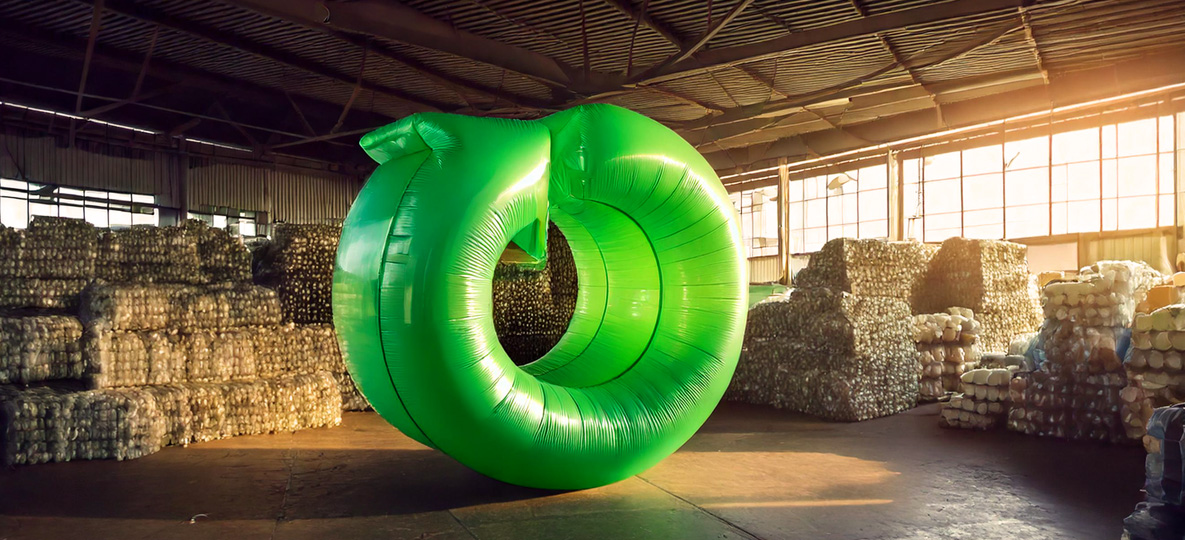Closing the Loop — The Life Cycle of Recycled Products

Understanding the life cycle of recycled products helps us realise the importance of recycling correctly. From collection to processing, and from manufacturing to consumer use, every item we recycle contributes to reducing waste, conserving resources, and supporting the circular economy.
Recycling is more than just tossing your waste into the correct bin. Every item we recycle embarks on a transformative journey, contributing to a circular economy where materials are continuously reused and repurposed.
In this blog post, we’ll explore the life cycle of recycled products, how they are transformed into new materials, and why it’s important to continue improving recycling habits both at home and in the workplace. We’ll also highlight how Ireland is progressing with its recycling goals and provide actionable steps to make a bigger impact.
-
The Collection and Sorting Process
The first stage in the life cycle of a recycled product starts with proper sorting and collection. Once materials like paper, plastic, glass, and metals are placed in the correct bins, they are collected by waste management companies and transported to sorting facilities. Here, recyclable materials are separated into different streams using both manual labour and automated machines.
Ireland’s Progress: According to the Environmental Protection Agency (EPA), Ireland achieved a municipal waste recycling rate of 41% in 2021 Home. However, contamination remains an issue, which makes sorting even more critical to ensuring materials are properly recycled.
Tip: At home and at work, ensure that items placed in recycling bins are clean and sorted correctly to avoid contamination and increase the chances of successful recycling.
-
Processing and Manufacturing of Recycled Materials
Once the materials are sorted, they are sent to processing plants where they undergo transformation into raw materials. For example:
- Paper is cleaned, pulped, and remade into new paper products such as newspapers, office paper, and cardboard.
- Plastics are shredded, melted, and reformed into pellets that can be used to create new plastic items like packaging or outdoor furniture.
- Glass is crushed, melted, and reformed into new glass bottles or jars, often using less energy than creating new glass from raw materials.
Statistic: Ireland’s recycling efforts resulted in the collection of 1.2 million tonnes of packaging waste in 2021, with 58% being successfully recycled Home. By increasing recycling rates, we can ensure more materials are processed and repurposed.
-
The Role of Recycled Products in Manufacturing
The next stage in the life cycle of recycled products is their integration into new products. Many industries use recycled materials in manufacturing to reduce costs and lower their environmental impact. For example:
- Plastic bottles can be turned into fleece clothing, carpeting, or construction materials.
- Recycled metals such as aluminium are used to create everything from new cans to parts for vehicles.
- Recycled glass can be used in construction as an aggregate or even in making new glass containers.
This stage of the life cycle emphasizes the importance of separating materials for recycling, as manufacturers rely on clean and quality recycled content to create new products.
Tip: Encourage the purchase of products made from recycled materials both at home and in the office. This helps close the recycling loop and supports the continued demand for recycled goods.
-
Closing the Loop: Consumer Use of Recycled Products
After recycled materials are transformed into new products, they are once again introduced to consumers. The cycle continues when these items are used and, at the end of their lifespan, recycled once more.
For example:
- Recycled office paper can be used in the workplace, and when discarded properly, it can be recycled again into more paper products.
- A plastic bottle used by a consumer can be recycled and re-enter the market as part of a new product, like garden furniture.
Statistic: The use of recycled materials reduces the need for virgin raw materials. Recycling aluminium, for example, saves 95% of the energy required to produce aluminium from raw bauxite Home. By reusing materials, we conserve natural resources and lower carbon emissions.
-
Why Improving Recycling Habits Matters
The life cycle of recycled products illustrates how every item we recycle can make a difference in creating new products and reducing environmental impact. By recycling correctly at home and at work, we support this circular system, reducing the need for raw materials and conserving energy.
Challenges in Ireland: While Ireland has made significant progress, challenges remain. For example, plastic packaging recycling rates were only 32.7% in 2021, falling short of the EU’s upcoming targets Home. Increasing education on proper recycling and encouraging the use of recycled products can help Ireland meet these targets.
Conclusion
Understanding the life cycle of recycled products helps us realise the importance of recycling correctly. From collection to processing, and from manufacturing to consumer use, every item we recycle contributes to reducing waste, conserving resources, and supporting the circular economy. Whether at home or in the workplace, by making small changes to improve recycling habits, we can have a big impact on the environment.
#SortItCampaign #LifeCycleOfRecycling #Sustainability #EcoFriendly #RecycledProducts #WasteManagement
Let’s all work together to improve our recycling habits and ensure that materials continue to be reused in Ireland’s growing circular economy.




